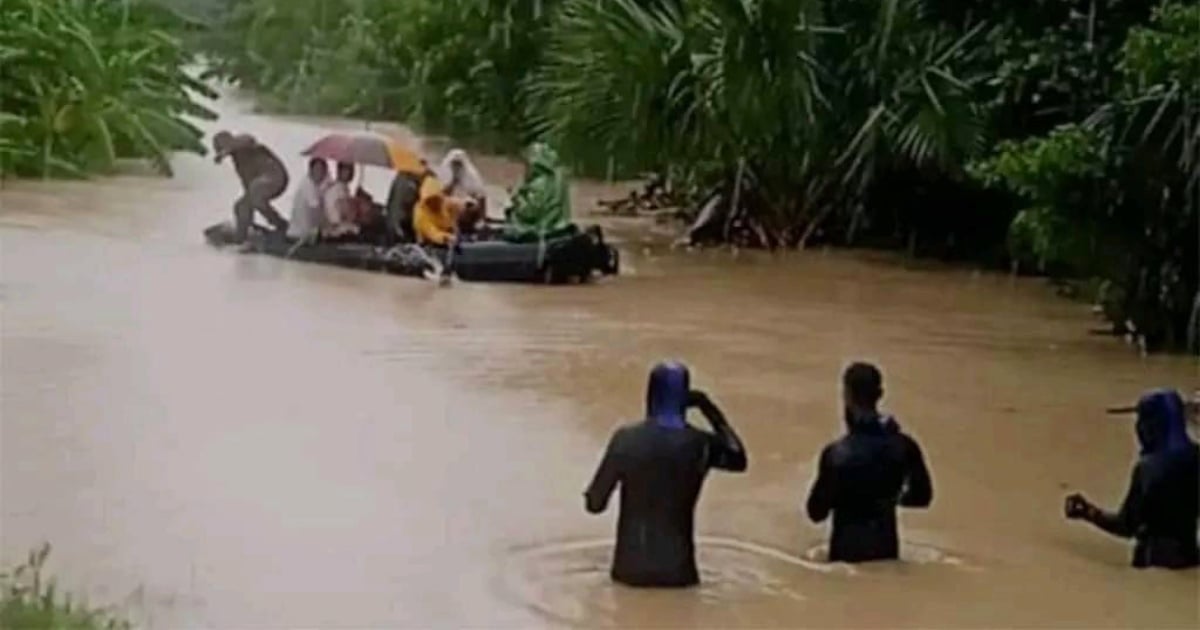The tropical storm known as Oscar, which made landfall in Cuba on October 20, has wreaked havoc across the eastern region, with Guantánamo province bearing the brunt of the damage. The initial reports confirm the death of six individuals, a figure that could rise given the severe conditions in the hardest-hit areas. Particularly affected are the municipalities of San Antonio del Sur and Imías, which faced unprecedented flooding.
The victims, all residents of San Antonio del Sur, have been identified as Francisco Colombia Matos (92), Esmeraldo Noa Fiffe (82), Antolino Areas Domínguez (84), Alexander Saben Matos (42), Irianni Labañino Domínguez (31), and a five-year-old child, Luís Andis Elías Labañino.
Widespread Evacuations Amidst Power Outages
Despite a massive blackout that plunged the nation into darkness last Friday afternoon, complicating efforts to keep the populace informed about the approaching storm, the Cuban government insists that evacuations were carried out. Over 15,000 people were evacuated in total: 9,000 from Imías and 6,000 from San Antonio del Sur. The scenes of devastation in these areas are striking, with homes submerged, food supplies lost, and many families struggling to salvage what remains.
In an emergency meeting, Miguel Díaz-Canel Bermúdez emphasized that while Oscar initially seemed like "a small cyclone," it evolved into a devastating force for the eastern region. Members of the Revolutionary Armed Forces (FAR) and the Ministry of the Interior (MININT) are actively participating in the initial rescue operations, especially in areas where floodwaters reached heights of up to one meter.
Severe Damage to Housing and Infrastructure
Oscar's most significant infrastructure damage has occurred in the municipalities of Baracoa and Maisí. In Baracoa, 743 homes have suffered roof damage, and 51 have experienced partial collapses. Maisí faces an even dire situation, with 340 homes losing their roofs entirely and another 667 suffering partial damage, as reported by the Granma newspaper. State facilities such as warehouses, stores, pharmacies, and schools have not been spared, and the full extent of the damage is still under assessment.
The agricultural sector, particularly coffee cultivation—a major crop in the region—has been severely affected, potentially impacting the local economy in the medium term.
Recovery Efforts and Challenges
Recovery efforts are underway, but Cuba faces a daunting task, given its current economic hardships. Landslides in areas like the famous La Farola highway have blocked access to isolated communities, complicating rescue and damage assessment efforts. Rescue teams and damage assessment crews are still on the ground, making it difficult to provide a complete overview of Oscar's impact.
Colonel Luis Ángel Macareño, deputy chief of the National Civil Defense Staff, confirmed that Guantánamo is the most affected province in eastern Cuba. On state television, Colonel Argenis Perales Pérez, head of the Operations Department of the National Civil Defense Staff, highlighted that rescue operations remain a priority, with FAR, Red Cross, and MININT brigades working in the hardest-hit areas.
Heavy Rainfall and Its Wider Impacts
Oscar's passage also brought heavy rains to other eastern Cuban provinces. In Holguín, rainfall accumulations reached 48.6 millimeters in the last 12 hours, with reservoirs at 73.3% capacity. In Granma, rain primarily affected mountainous municipalities, which are under constant watch due to landslide risks. Santiago de Cuba saw significant impacts on its coffee harvest, with authorities beginning to collect 32,000 cans of beans to prevent losses from moisture.
In Las Tunas, about 14,000 residents were safeguarded, and the province has seen coastal flooding and swells in several areas.
Devastation in Maisí and Baracoa
Maisí, one of the areas hardest hit by the storm, reported severe roof damage to several homes, including the petrocasas in La Punta and the Sabana polyclinic. Torrential rains caused numerous rivers to overflow, exacerbating the situation in the most vulnerable communities. The Punta de Maisí weather station recorded a staggering 366 millimeters of rain in 24 hours, illustrating the disaster's scale. Other regions, like Caujerí Valley and Jamal in Baracoa, reported 268 mm and 208.2 mm, respectively.
While the center of Tropical Storm Oscar has moved away from Cuba, the eastern part of the country will continue to experience rainfall over the next 24 to 48 hours. Meteorologists warn that, although winds have decreased, the risk of new floods remains high in areas with already saturated soils.
Celso Pasos, director of the Cuban Meteorology Institute, emphasized the importance of assessing hazards, vulnerabilities, and risks to make informed decisions as climate change results in more frequent and intense weather events. Meanwhile, Dr. José Rubiera from the National Forecast Center reported that Oscar is dissipating and is expected to weaken further as it moves towards the Bahamas.
The aftermath of Hurricane Oscar in Guantánamo has left a trail of destruction and loss that will leave a lasting mark on the province. Although the cyclone is moving away, recovery efforts are just beginning. With thousands still evacuated and vast areas of the province inaccessible, the task ahead for Guantánamo's authorities and residents is monumental. "All of Cuba is focused on Guantánamo," declared Miguel Díaz-Canel recently. The last time a major hurricane struck Cuba was in September 2017, when Hurricane Irma paralleled the island's northern coast, resulting in ten fatalities and officially reported material losses of $13.185 billion.
